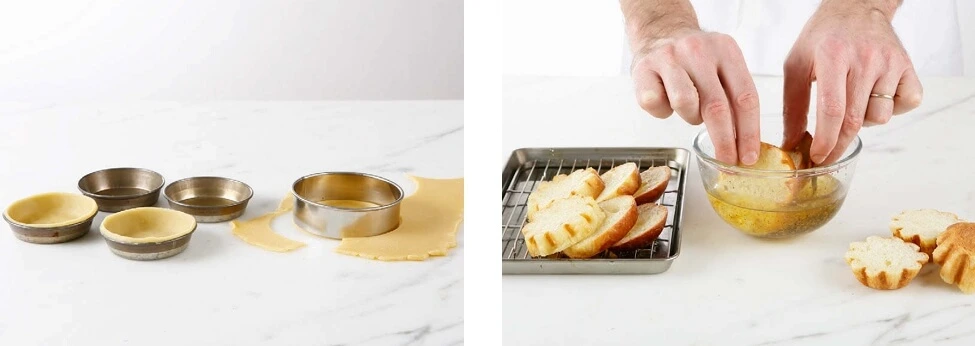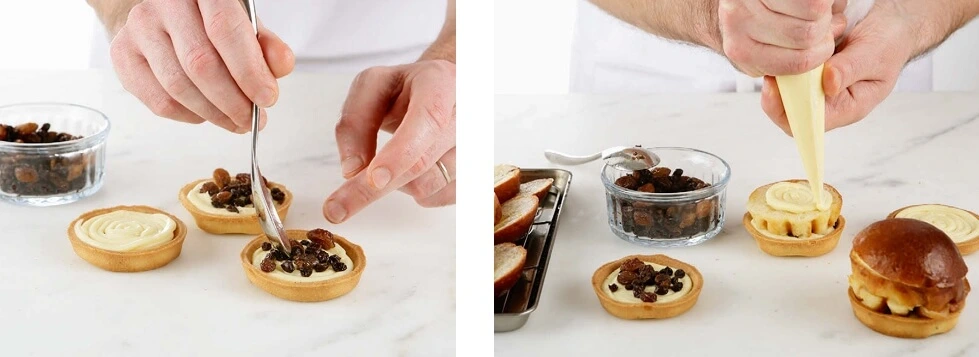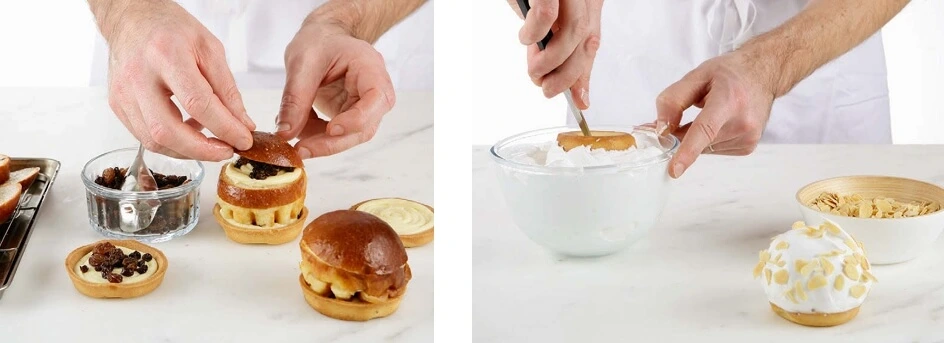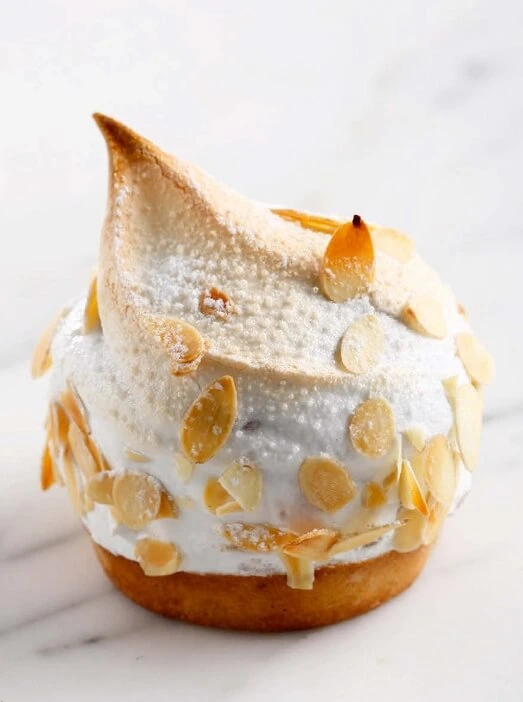brioche tartlet recipe
Polonaise is a timeless culinary preparation that brings a touch of elegance and warmth to the table, beloved across generations for its simple yet sophisticated charm. At its heart, it embodies the perfect marriage between fresh, tender vegetables and a luxurious finishing touch that transforms everyday ingredients into a celebration of texture and flavor.
Imagine freshly cooked vegetables—often tender, vibrant, and gently steaming—waiting patiently to be dressed in a sumptuous sauce that is both rich and nuanced. The Polonaise style introduces a harmonious blend of buttery richness, the subtle crunch of toasted breadcrumbs or nuts, and a delicate hint of bright, fresh herbs, all united by a subtle acidity that lifts the dish beyond mere comfort food.
What makes this preparation
so special is its ability to elevate humble vegetables, such as cauliflower, green beans, or asparagus, transforming them from simple sides into the centerpiece of any meal. The warm, nutty breadcrumbs add a golden, crisp texture that contrasts beautifully with the softness of the vegetables, creating a sensory experience that is both satisfying and refined.
The essence
of Polonaise lies not only in its flavors but also in its symbolism—a dish that celebrates freshness, care, and the art of finishing touches. It is often associated with convivial family meals, holiday gatherings, or elegant dinner parties where every detail matters. This dish invites diners to slow down and appreciate the nuances of simple ingredients, expertly brought together through a thoughtful balance of texture, aroma, and taste.
Serving Polonaise is like offering a warm embrace on the plate—comforting yet sophisticated, familiar yet elevated. Its rich history and timeless appeal make it a favorite that continues to inspire cooks and diners alike, proving that with the right approach, even the simplest vegetables can be transformed into something truly memorable.
Want to learn pâte levée? Start with our Classic Brioche Guide.
recipe details
For 12 people
Preparation time: 3 hours
First rise (pointage): 30 minutes
Refrigeration: 2 hours
Freezing: 1 hour
Baking time: 40 minutes
Storage: Up to 48 hours
Equipment:
- Stand mixer
- Pastry scraper
- 6 brioche molds
- Whisk
- Sieve
- Rolling pin
- 6 tartlet molds (7 cm diameter)
- Thermometer
- Piping bag without tip
- Fine mesh strainer
Ingredients:
- 20 g candied fruit or rum-soaked raisins
Brioche dough:
- 250 g all-purpose flour (type T45)
- 5 g salt
- 30 g sugar
- 15 g fresh yeast
- 150 g eggs
- 130 g butter
Sweet pastry dough (pâte sucrée):
- 250 g flour
- 100 g butter
- 100 g powdered sugar
- 2 g salt
- 60 g eggs
Syrup (112°D):
- 1000 g water
- 500 g sugar
- Sufficient amount of orange zest
- 100 g kirsch
Pastry cream:
- 250 g milk
- 50 g eggs
- 50 g sugar
- 12.5 g flour
- 12.5 g custard powder (flan powder)
Italian meringue:
- 100 g egg whites
- 200 g cooked sugar syrup
Finishing:
- Sufficient quantity of sliced almonds
- Sufficient quantity of powdered sugar
Brioche (Short Recipe)
Mix flour, sugar, salt, fresh yeast, eggs, and softened butter until smooth and elastic. Let the dough rise until doubled in size. Shape into small brioche forms and bake at 210°C (410°F) for about 15 minutes. Once cooled, slice into pieces.
Sweet Pastry Dough (Pâte Sucrée) – Short Recipe
Cream butter and powdered sugar together until smooth. Add eggs and mix well. Incorporate flour and salt, knead gently until just combined. Chill the dough before rolling out.
Roll the dough to 3 mm thickness, cut into 8 cm diameter disks. Line tartlet molds with the dough and bake blind at 180°C (350°F) for 20 minutes. Set aside.
Syrup Preparation
Boil water, sugar, and orange zest to make a syrup. Remove from heat, add kirsch, and cool to about 60°C (140°F). Dip brioche slices briefly into the warm syrup, then drain on a rack.
Pastry Cream (Short Recipe)
Heat milk until just boiling. In a bowl, whisk eggs, sugar, flour, and custard powder until smooth. Slowly pour hot milk into the egg mixture while whisking. Return to heat and cook gently, stirring constantly until thickened. Cool before piping.
Assembly
Fill tartlet shells with pastry cream. Scatter some rum-soaked raisins over the cream. Place a syrup-dipped brioche slice on top. Pipe more pastry cream over the brioche slice to finish.
Prepare the brioches:
Bake them at 210°C (410°F) for 15 minutes. Once cooled, slice them into pieces.
Prepare the sweet pastry dough:
Roll the dough out to 3 mm thickness, cut out 8 cm diameter discs, and line tartlet molds with them. Blind bake at 180°C (350°F) for 20 minutes, then set aside.

Prepare the syrup:
Make a syrup by boiling water, sugar, and orange zest. Remove from heat, add kirsch, and wait until the syrup cools to about 60°C (140°F). Dip the brioche slices briefly into the syrup, then drain on a rack.

Prepare the pastry cream:
Let the pastry cream cool before transferring it to a piping bag. Fill the tartlet shells with cream. Scatter some rum-soaked raisins over the cream. Place a syrup-soaked brioche slice on top. Pipe more pastry cream over the brioche slice, then add more raisins. Repeat the layering, and finally, place the top “hat” of the brioche on it. Freeze for 1 hour.

Prepare the Italian meringue:
Insert the tip of a knife beneath the brioche part of the tartlet and dip that portion carefully into a bowl of Italian meringue. Be careful not to cover the entire tartlet with meringue. Sprinkle sliced almonds over the exposed meringue.

Conclusion
This delicate assembly of syrup-soaked brioche, silky pastry cream, and crisp sweet pastry shells is a true celebration of texture and flavor. The subtle infusion of kirsch in the syrup adds a refined aromatic note that complements the richness of the brioche and the smooth creaminess of the custard. The layered raisins, soaked to perfection, bring bursts of sweetness and complexity with every bite. The final touch of Italian meringue, lightly kissed with toasted almond slices, offers a gentle crunch and a hint of sweetness that balances the dessert perfectly.
This dessert is as visually striking as it is delicious, showcasing the harmony of traditional French pastry techniques and thoughtful ingredient pairing. The preparation, while detailed, invites patience and care, rewarding you with a sophisticated creation that will impress at any gathering or special occasion. Moreover, the option to freeze the tartlets before finishing with meringue allows you flexibility in timing, making it ideal for both planned events and last-minute indulgences.
Whether served at a formal dinner or as a luxurious treat to elevate your afternoon tea, this dessert embodies elegance and comfort simultaneously. It invites the savoring of each component, encouraging mindfulness in enjoying every bite. Taking the time to prepare this will surely deepen your appreciation for the artistry of French patisserie and the joy of homemade delicacies.he brioche tartlet has roots in traditional French baking — learn more from Institut Paul Bocuse
Frequently Asked Questions
Q: Can I prepare this dessert in advance?
A: Absolutely! You can prepare the brioche, pastry shells, syrup, and pastry cream ahead of time. The tartlets can be assembled and frozen for up to 24 hours before finishing with the Italian meringue. This makes it perfect for planning ahead without compromising freshness or quality.
Q: What if I don’t have kirsch?
A: You can substitute kirsch with another clear fruit brandy, such as eau-de-vie or a mild cherry liqueur. If you prefer a non-alcoholic version, try using orange blossom water or a splash of fresh orange juice to complement the citrus zest in the syrup.
Q: How can I make sure my brioche is soft and tender?
A: Use fresh ingredients and ensure the dough is well kneaded for gluten development. Allow ample time for the dough to rise in a warm, draft-free environment. Adding enough butter contributes to a tender crumb, while baking at the right temperature ensures a golden crust without drying the interior.
Q: Can I replace the raisins with other dried fruits?
A: Certainly! Dried cherries, cranberries, or chopped apricots soaked in rum or another spirit of your choice will add delightful variations while maintaining the moist texture and flavor contrast.
Q: How do I achieve a smooth, glossy Italian meringue?
A: Slowly pour hot sugar syrup into whisked egg whites while continuing to whip at medium speed. Whip until the mixture cools and forms stiff, glossy peaks. Use fresh eggs and a clean mixing bowl for best results.

